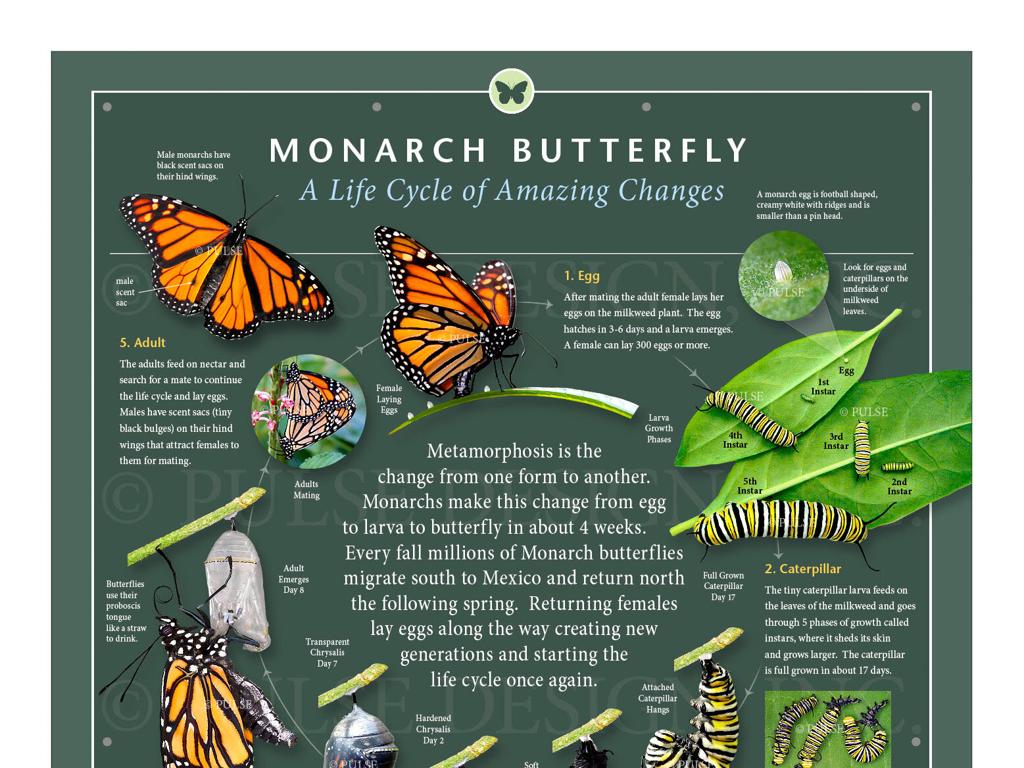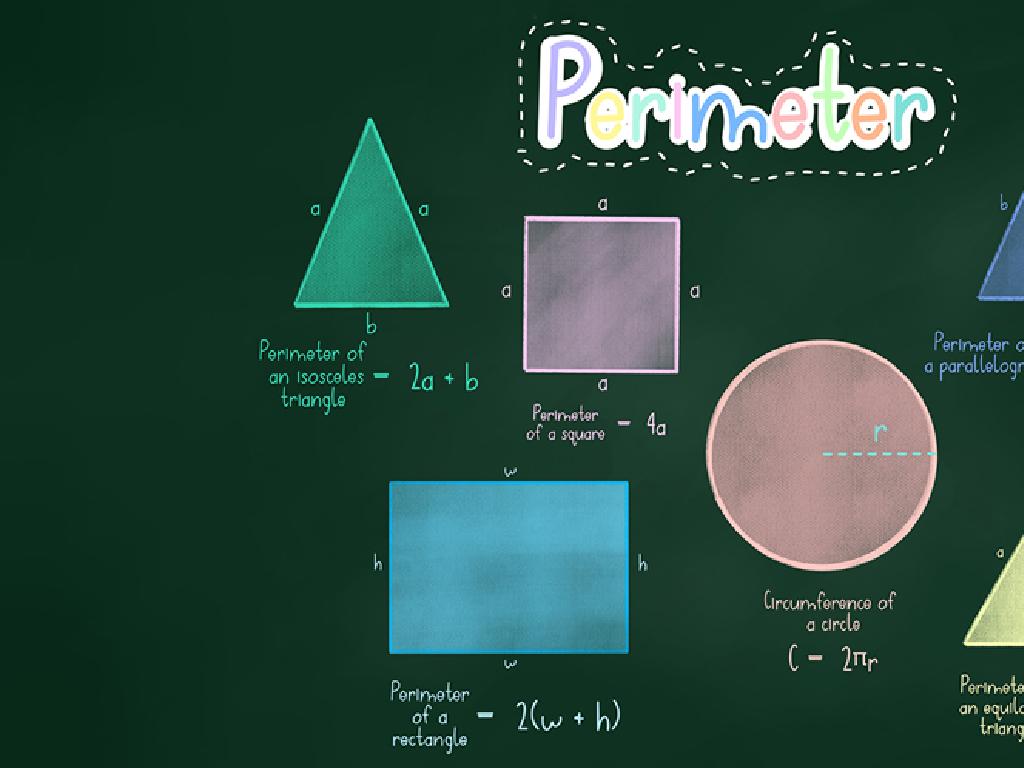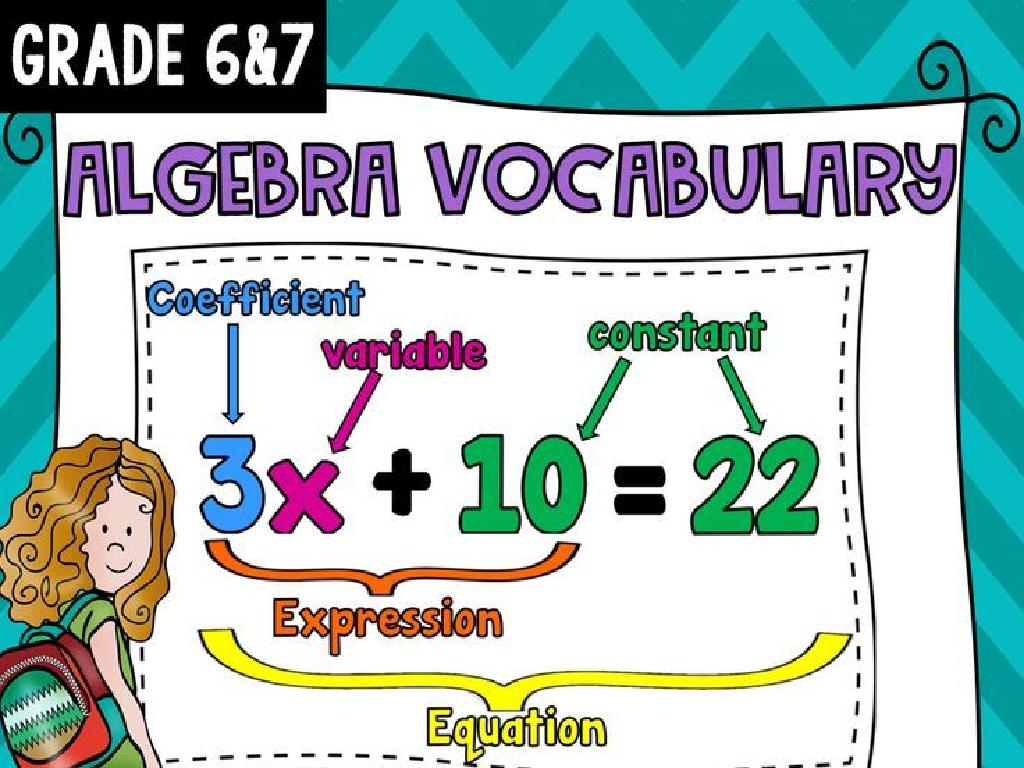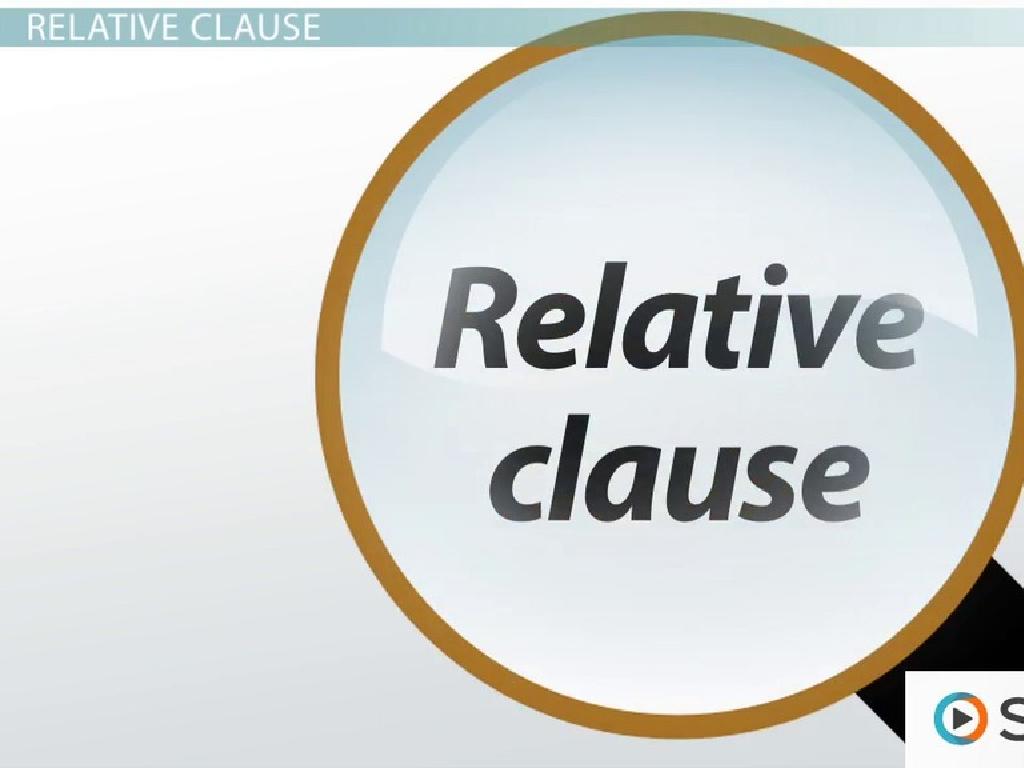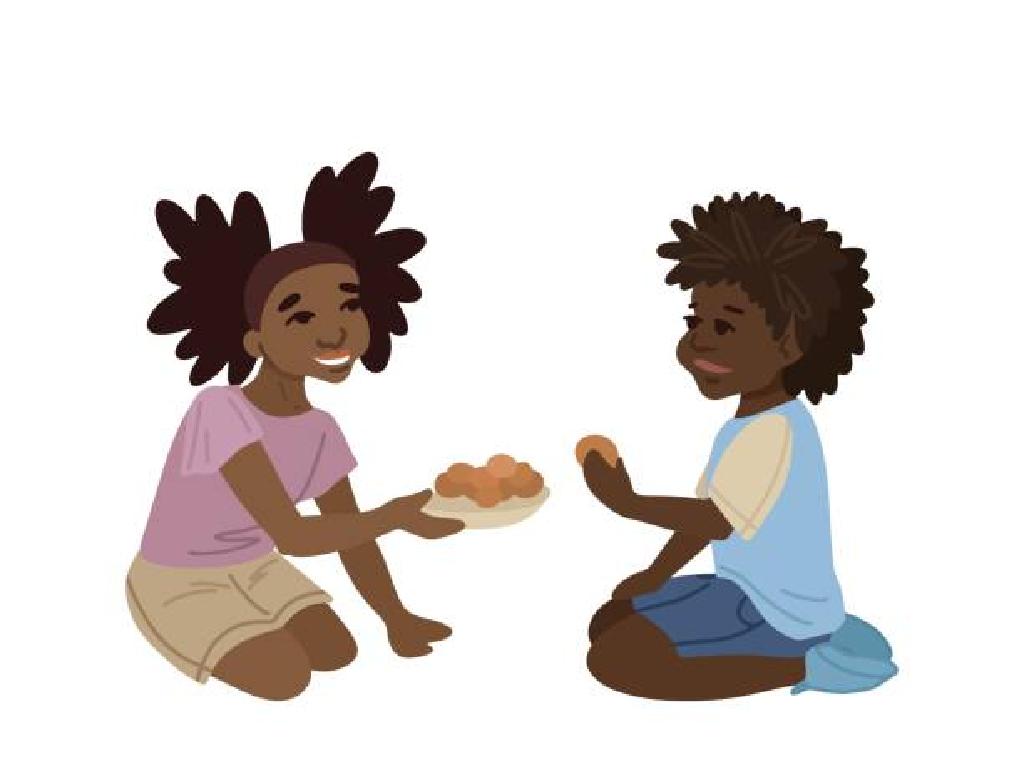Día De Los Muertos
Subject: Social studies
Grade: Third grade
Topic: Cultural Celebrations
Please LOG IN to download the presentation. Access is available to registered users only.
View More Content
Exploring Día de los Muertos
– What is a cultural celebration?
– It’s a way people celebrate their culture’s unique traditions and values.
– Discovering Día de los Muertos
– A special holiday in Mexico honoring loved ones who have passed away.
– Significance of the holiday
– It’s a time to remember and celebrate the lives of the deceased.
– Symbols and traditions
– Learn about marigolds, altars, and sugar skulls used during the celebration.
|
This slide introduces students to the concept of cultural celebrations, focusing on Día de los Muertos, a significant holiday in Mexican culture. Begin by discussing what a cultural celebration is and how it helps people honor their heritage. Introduce Día de los Muertos as a day to remember and celebrate loved ones who are no longer with us. Explain that it’s a joyful time, despite its focus on death, and that it’s filled with vibrant colors, music, and food. Highlight key symbols like marigolds, which are believed to guide spirits back to the living world, and sugar skulls, which represent the departed souls. Encourage students to think about their own ways of remembering loved ones and to respect different cultural practices.
Exploring Día de los Muertos
– A special holiday in Mexico
– Día de los Muertos is when families remember people who are no longer with us.
– Remembering loved ones
– We think about the happy times we had with people we miss.
– Celebrating life, not Halloween
– It’s a time for music, food, and fun, to celebrate the lives of those who have passed.
– Joyful memories and traditions
|
Día de los Muertos, or Day of the Dead, is a vibrant and meaningful holiday celebrated on November 1st and 2nd in Mexico. Unlike Halloween, which is often about spooky things, Día de los Muertos is a joyful time to honor and remember family and friends who have died. It’s a way to keep their memories alive with stories, favorite foods, and even building altars called ‘ofrendas’ with pictures and items that belonged to the loved ones. This slide aims to introduce students to the basic understanding of the holiday and its significant differences from Halloween, emphasizing the positive aspects of remembrance and celebration.
The History of Día de los Muertos
– Originated with the Aztecs
– A tradition from the Aztec civilization
– Celebrated over 3,000 years ago
– Initially observed in summer
– It used to be a summer event
– Date changed by the Spanish
– Now aligns with All Saints’ Day
|
Día de los Muertos, or Day of the Dead, is a rich cultural celebration with a history that dates back to the Aztec civilization over 3,000 years ago. Originally, this event was celebrated in the summer months. However, when the Spanish conquistadors arrived in the Americas, they influenced the change of the celebration’s date so that it would coincide with the Catholic holiday of All Saints’ Day. This blending of indigenous and European traditions has resulted in the unique celebration we know today. It’s important to convey to the students the significance of this event as a time to honor and remember loved ones who have passed away. Encourage students to think about how traditions can change over time and the importance of honoring cultural heritage.
Symbols and Traditions of Día de los Muertos
– Families build ‘ofrendas’ to honor loved ones
– Ofrendas have photos, food, and personal items
– Marigolds guide spirits with color and scent
– Bright marigolds are believed to lead spirits back
– Sugar skulls symbolize departed souls
– Each sugar skull represents a soul
– Colorful icing personalizes sugar skulls
– Icing adds a unique touch to each skull
|
This slide introduces students to the rich symbols and traditions of Día de los Muertos, a celebration to honor and remember those who have passed away. Explain that ‘ofrendas’ are special altars set up in homes, decorated with items that the deceased loved in life, symbolizing respect and remembrance. Marigolds, with their vibrant color and strong fragrance, are thought to attract spirits to the altars. Sugar skulls, crafted from sugar or clay, are decorated to represent the souls of the departed, with colorful icing adding a personal and artistic touch. Encourage students to think about what items they might place on an ‘ofrenda’ for someone they loved and to consider the importance of traditions in keeping memories alive.
Día de los Muertos: Food and Festivities
– ‘Pan de muerto’ tradition
– A sweet bread called ‘pan de muerto’ is baked for this day.
– Visiting and decorating graves
– Families clean graves and enjoy picnics at cemeteries.
– Enjoying music and dancing
– Traditional music and dances celebrate loved ones’ lives.
– Colorful parades
– Parades with costumes and floats fill the streets.
|
This slide focuses on the festive aspects of Día de los Muertos, a celebration to honor and remember deceased loved ones. ‘Pan de muerto,’ a special sweet bread, is prepared and eaten. Families visit cemeteries, not in mourning, but to clean and decorate the gravesites of their loved ones, often having picnics as part of the tradition. Music and dancing are integral, with traditional songs and moves that celebrate the lives of those who have passed away. Parades are held with vibrant costumes and floats, adding to the celebratory atmosphere. Encourage students to think about how these traditions help keep the memory of family members alive and compare them to their own family traditions.
Día de los Muertos Today
– Celebrated in Mexico and beyond
– It’s a special day for people with Mexican heritage.
– UNESCO recognizes this tradition
– It’s considered a treasure of human culture.
– Costumes and face painting
– Skulls are a symbol; people dress up to honor the dead.
– Gatherings for celebration
– Families and friends meet to remember loved ones.
|
Día de los Muertos, or Day of the Dead, is a vibrant and meaningful celebration observed in Mexico and by people of Mexican heritage around the world. It’s a time when families honor their deceased loved ones in a festive way. Recognized by UNESCO, this tradition underscores the cultural significance of the holiday and its universal value. During the celebration, people often wear costumes and paint their faces to resemble skulls, symbolizing death and rebirth. Gatherings, parties, and parades are common, creating a community atmosphere of remembrance and respect. This slide aims to give students a glimpse into the contemporary practices of Día de los Muertos and its importance as a cultural heritage.
Understanding and Respecting Día de los Muertos
– Learning about world cultures
– Día de los Muertos: A celebration of life
– It’s a Mexican holiday where people honor deceased family and friends.
– Remembering loved ones
– Think of someone you miss and how you keep their memory alive.
– Sharing personal family traditions
– Do you have a special way to remember someone who was important to you?
|
This slide aims to foster understanding and respect for cultural diversity by introducing students to Día de los Muertos, a significant cultural celebration in Mexico. Emphasize that this holiday is a joyful time to remember and honor those who have passed away, rather than to mourn. Encourage students to reflect on their own family traditions and share how they remember loved ones. This can be a sensitive topic, so approach it with care and ensure a respectful and inclusive environment for all students to share their experiences and thoughts.
Class Activity: Create Your Own Ofrenda
– We’re making a class ‘ofrenda’
– Bring a photo or a drawing
– Picture of a loved one who has passed
– Decorate with flowers and drawings
– Use bright marigolds, paper decorations
– Add objects that remind you of them
– Favorite snacks, toys, or mementos
|
This activity is designed to help students understand and participate in the cultural tradition of Día de los Muertos by creating a communal ofrenda. An ofrenda is an altar created to remember and honor the memory of ancestors and loved ones who have passed away. Encourage students to bring a photo or a drawing of someone they would like to remember. Provide materials such as paper flowers, drawings, and other craft supplies for decoration. Allow students to share stories about the items they bring and the people they are remembering. This can be a sensitive activity, so be respectful and considerate of students’ feelings and privacy. Possible variations of the activity could include writing a poem or short story about the person they’re remembering, creating a digital ofrenda using a collage app, or even bringing in a recipe of a dish that their loved one enjoyed.
Reflecting on Día de los Muertos
– Learned about Día de los Muertos
– A celebration to honor loved ones who have passed away.
– Importance of cultural celebrations
– Understanding different cultures fosters respect and unity.
– Sharing our ofrenda contributions
– Each student will share an item they added to the class ofrenda.
– Discussing the significance
– Students explain why their chosen item is special to them.
|
In this concluding slide, we aim to encapsulate what the students have learned about Día de los Muertos, emphasizing the importance of understanding and respecting different cultural celebrations. Encourage students to reflect on the traditions and symbols associated with this holiday, such as the ofrenda, and how it helps to remember and honor the deceased. Facilitate a discussion where each student shares the item they contributed to the class ofrenda and explains its personal significance, allowing them to connect with the holiday on a personal level. This reflection will help students appreciate the value of diversity and the ways in which various cultures commemorate their loved ones.

